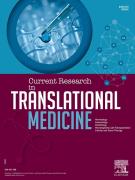Therapeutic Promise of CRISPR-Cas9 Gene Editing in Sickle Cell Disease and β-Thalassemia: A Current Review - 12/04/25

Abstract |
Sickle cell disease (SCD and β-thalassemia (BT) affects millions of people worldwide. In addition, around 500,000 infants are born with SCD and 60,000 people are diagnosed with BT every year. Mutations in the hemoglobin subunit beta (HBB) gene are responsible for causing both BT and SCD. Indeed, the diversity of potential mutations in the HBB gene elucidates the diversity in clinical severity observed in individuals with BT and related morbidities. On the other hand, SCD takes place because of the alteration in a single amino acid at position 6 in the beta-globin chain, where a base substitution occurs from glutamic acid to valine, which eventually results in abnormal sickle hemoglobin. Conventional therapies for BT and SCD including pharmaceutical drugs and blood transfusion might temporarily improve the clinical severity of these diseases, however these therapies cannot cure the diseases. CRISPR-Cas9 (CC9) is revolutionizing genome engineering, offering promising therapeutic avenues for genetic diseases. Therefore, CC9-mediated gene therapy provides great hope in the treatment of both BT and SCD. CC9-mediated gene therapy has already demonstrated its effectiveness in correcting both SCD and BT-causing mutations. Moreover, CC9-mediated gene editing was found to be effective in reactivating the expression of hemoglobin F (HbF) and regulating LRF and BCL11A. A number of clinical trials with CC9 gene-edited therapies are being carried out to elucidate their potential in treating BT and SCD. Genetics and pathophysiological mechanisms of SCD and BT, the mechanism of CC9-mediated gene editing, and common delivery methods of the CC9 system have been discussed in this review. Moreover, an in-depth discussion on applications and the current status of CC9-mediated gene editing in SCD and BT along with current challenges and future perspectives have been provided.
Le texte complet de cet article est disponible en PDF.Keywords : Sickle cell disease, β-thalassemia, CRISPR-Cas9, Mutations, Hemoglobin F
Plan
Bienvenue sur EM-consulte, la référence des professionnels de santé.
L’accès au texte intégral de cet article nécessite un abonnement.
Déjà abonné à cette revue ?

